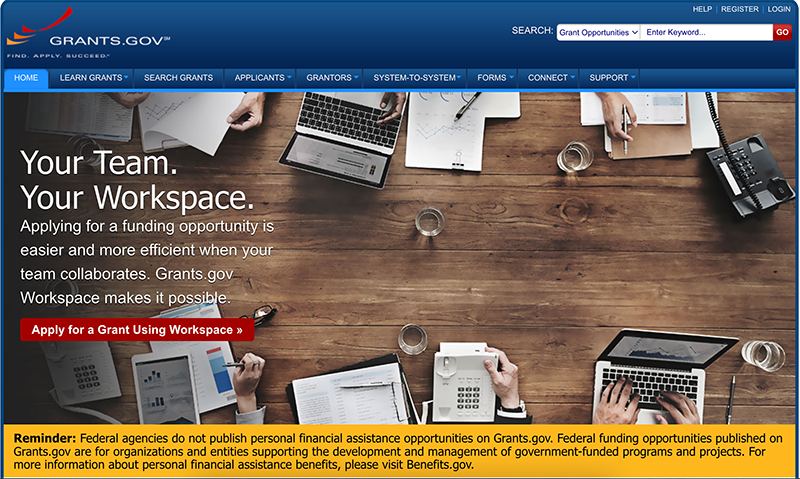Those of us familiar with the need to diversify funding streams, particularly in the world of nonprofits and state agencies, likely have some familiarity with the various federal funding processes. Probably most coveted among the options are the federal appropriations acquired through Congressionally Directed Spending Requests which are handled by each state’s Congressional Members. Acquired through one of the twelve appropriations bills, Members submit their requests in the hopes that their peers will agree that it’s a necessary expense in their particular state. These are the same bills that fund federal agency programs, resulting in another form of federal funding, the federal grant.
There are three types of grants. Block grants, or formula grants, are responses to federal programs supporting states, tailored by each state for their specific needs. For instance, Temporary Assistance for Needy Families (TANF) is a block grant allowing states to aid needy families. However, the amount given to each state is not the same as the geographies and demographics of each state are not the same. States take the funds from their TANF grant and use it, often in tandem with state-raised funds, to meet the needs of those residents who are eligible for the assistance.
The second type of federal grant is the student loan or grant that assists eligible college residents. This assistance varies and can be in the form of a Pell Grant, assuming all conditions are met—does not need to be repaid—or a student loan, which does have to be repaid. Federal grants for students would also include federal work-study programs for students.
The third type of federal grant is the discretionary grant. These are competitive funds awarded through an application process overseen by the agency offering the grant. An example of this type of grant is the Behavioral Health Partnership for Early Diversion of Adults and Youth offered by the U.S. Health and Human Services (HHS) Substance Abuse and Mental Health Services Administration (SAMHSA). The purpose of this grant is to divert persons living with mental illness or a co-occurring disorder from ending up in the justice system, helping them to find recovery by increasing the accessibility to treatment and services. These types of grants are meant to support projects that will help determine if alternative interventions will solve a problem.
Federal discretionary grants can be daunting; both finding them and creating a responsive application can be overwhelming for the uninitiated. Here are a few tips for making federal funding scalable for your organization.
1. Get onto grants.gov and start looking around!

Grants.gov is the federal warehouse for all things grants. On this page, you can find details on past and present grant opportunities. You can search by keyword or opportunity number if you have it, or you can narrow down the search by opportunity status (forecasted, posted, closed, or archived), funding instrument type (cooperative agreement, grant, other, or procurement contract), by eligibility (the type of applicant allowable), or category, or federal agency. Grants.gov is a very, very large website. Atrómitos recommends that those unfamiliar with the site start by clicking on the “Learn Grants” tab and perusing some of the learning tools the site offers (ex. Grants 101)

2. Know what to look for in the Notice of Funding Opportunity (NOFO)
No one wants to spend huge amounts of time looking at unsuitable opportunities. Organizations should check out a few things in the NOFO before bothering to read through the entire document (some of these are over 100 pages!). You’ve found the NOFO and read the program description. It seems to suit your needs, what now?
First, check your eligibility, is your organization allowed to apply?
Second, when is it due? Do you have time to pull your team together to meet the deadline?
Third, how many awards is the agency projecting will be given? If only a handful are awarded, we recommend the organization be brutally honest with itself. Forego applications where the organization is just not going to be competitive.
Fourth, see if you can figure out who else in the geography is applying. If another entity in your geography is applying, make the effort to determine if the application you can make is still competitive or if you might consider combining your efforts to build an even stronger application.
Finally, let’s get back into your application using the budget. We recommend you begin your budget by seeing how much staffing you can afford. For the price offered, can you adequately staff and operationalize your project? Once you have an idea of your project and you build your budget, you’ll be able to construct a compelling application.
3. Consider Sustainability
Federal funding does wonders, but it is short-term, and often applicants are expected to evaluate their findings and gather data on behalf of the agency. If the project provides an important intervention for your community, make sure you’re looking closely at the sustainability of the model – and possibly its expansion to other areas – as you are building your application. Your final project year should be spent partly on putting the necessary sustainability pieces in place. Your sustainability may be to hire a grant professional or find a service that supports the need to continue funding your work. You may find it possible to apply to the competitive grant in a new round for slightly different pieces of work on the same project.
Federal funding can be a game changer for many organizations, particularly those in the healthcare and education fields, where these opportunities allow for business development and operational changes that better serve patients and students. Don’t shy away from the process based on its unfamiliarity. While the learning curve may be steep, it’s not insurmountable
Looking for more tips or information about federal funding and discovering how it can help you? Don’t hesitate to reach out to Atrómitos for a free 30-minute consultation by filling out our contact form through the navigation button below.


